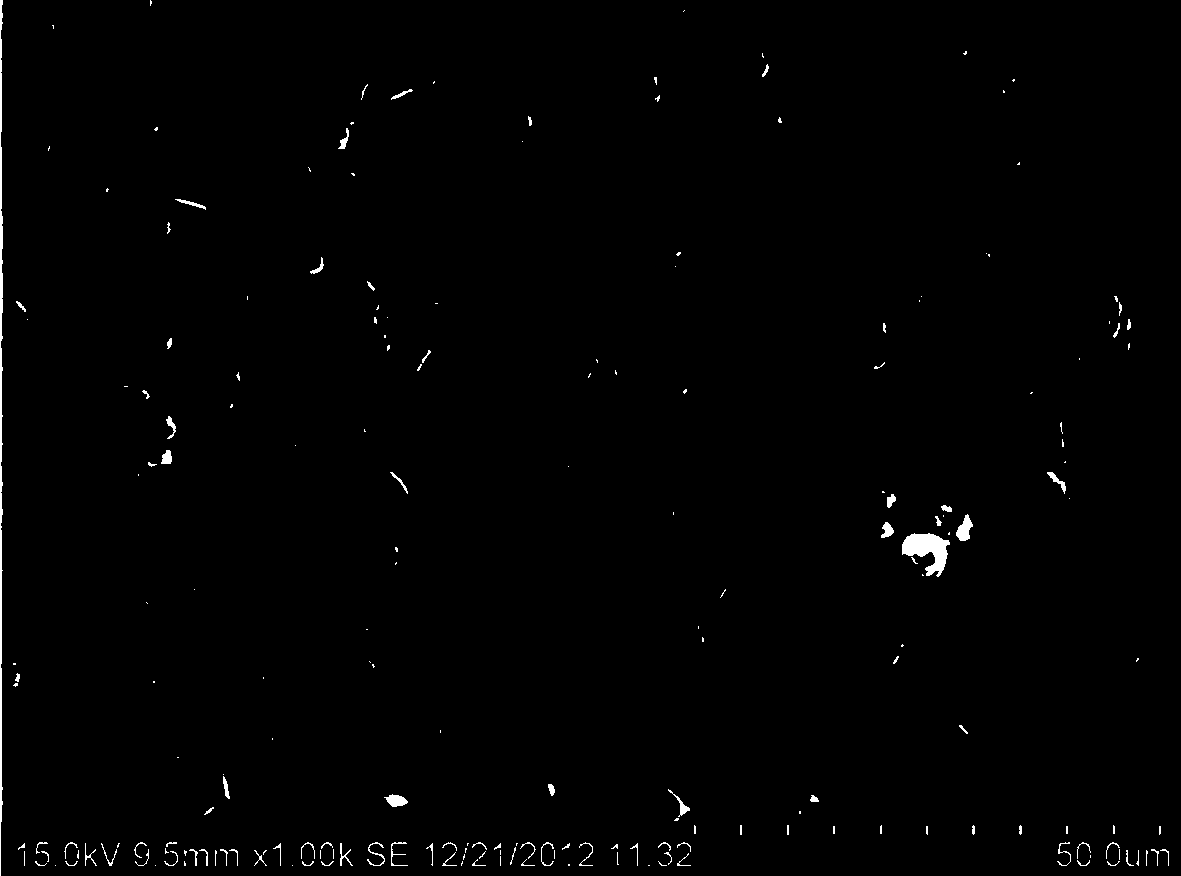Preparation method for high-coercivity sintered neodymium-iron-boron
A high coercive force, neodymium iron boron technology, applied in the direction of magnetic materials, magnetic objects, electrical components, etc., can solve the problem of coercive force rise and other problems, achieve the increase of intrinsic coercive force, prolong the service life, and increase the magnetic energy product Effect
- Summary
- Abstract
- Description
- Claims
- Application Information
AI Technical Summary
Problems solved by technology
Method used
Image
Examples
Embodiment 1
[0028] Example 1: 50M
[0029] 1. Raw materials with a purity greater than 99% are classified as Nd 30 Fe 68.82 Cu 0.1 Ga 0.1 B 0.98 (wt%) ratio for batching, and then use intermediate frequency vacuum quick-setting throwing belt furnace to prepare alloy flakes with a thickness of 0.25-0.35mm;
[0030] 2. Put the alloy flakes in the reactor of the hydrogen crushing furnace to absorb hydrogen at room temperature for 2 hours, then heat to 550°C for 6 hours to dehydrogenate, and prepare coarse particles with a particle size of 60-80 mesh, and then add 1‰ of anti-oxidant (polyepoxide Ethylene allyl ether) mixed evenly for 10-30 minutes;
[0031] 3. Grind the coarse powder after the 2-step mixing by a QLMR-260G jet mill under a working pressure of 0.8 MPa to a fine powder with an average particle size of 2.5 μm;
[0032] 4. In an argon protective atmosphere, add Nd rare earth nano-additives with an average particle size of 55nm to the 3-step powder by using the jet method, ...
Embodiment 2
[0041] Example 2: 45H
[0042] 1. Raw materials with a purity greater than 99% are classified as PrNd 30.1 Fe 68.1 al 0.1 Cu 0.1 co 0.3 Nb 0.2 Ga 0.1 B 1.0 (wt%) ratio for batching, and then use intermediate frequency vacuum quick-setting throwing belt furnace to prepare alloy flakes with a thickness of 0.25-0.35mm;
[0043] 2. Put the alloy flakes in the reactor of the hydrogen crushing furnace to absorb hydrogen at room temperature for 2 hours, then heat to 550°C for 6 hours to dehydrogenate, and prepare coarse particles with a particle size of 60-80 mesh, and then add 1‰ of anti-oxidant (polyepoxide Ethylene allyl ether) mixed evenly for 10-30 minutes;
[0044] 3. Grind the coarse powder after the 2-step mixing by a QLMR-260G jet mill under a working pressure of 0.8 MPa to a fine powder with an average particle size of 2.5 μm;
[0045] 4. In an argon protective atmosphere, add Pr-Nd and Dy rare earth nano-additives with an average particle size of 50nm to the pow...
Embodiment 3
[0054] Example 3: 42H
[0055] 1. Raw materials with a purity greater than 99% are classified as PrNd 29.7 Fe 68.5 al 0.1 Cu 0.1 co 0.3 Nb 0.2 Ga 0.1 B 1.0 (wt%) ratio for batching, and then use intermediate frequency vacuum quick-setting throwing belt furnace to prepare alloy flakes with a thickness of 0.25-0.35mm;
[0056] 2. Put the alloy flakes in the reactor of the hydrogen crushing furnace to absorb hydrogen at room temperature for 2 hours, then heat to 550°C for 6 hours to dehydrogenate, and prepare coarse particles with a particle size of 60-80 mesh, and then add 1‰ of anti-oxidant (polyepoxide Ethylene allyl ether) mixed evenly for 10-30 minutes;
[0057] 3. Grind the coarse powder after the 2-step mixing by a QLMR-260G jet mill under a working pressure of 0.8 MPa to a fine powder with an average particle size of 2.5 μm;
[0058] 4. In an argon protective atmosphere, add Pr-Nd, Dy, and Ho rare earth nano-additives with an average particle size of 50nm to th...
PUM
| Property | Measurement | Unit |
|---|---|---|
| particle size | aaaaa | aaaaa |
| particle size | aaaaa | aaaaa |
Abstract
Description
Claims
Application Information
 Login to View More
Login to View More - R&D
- Intellectual Property
- Life Sciences
- Materials
- Tech Scout
- Unparalleled Data Quality
- Higher Quality Content
- 60% Fewer Hallucinations
Browse by: Latest US Patents, China's latest patents, Technical Efficacy Thesaurus, Application Domain, Technology Topic, Popular Technical Reports.
© 2025 PatSnap. All rights reserved.Legal|Privacy policy|Modern Slavery Act Transparency Statement|Sitemap|About US| Contact US: help@patsnap.com

